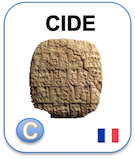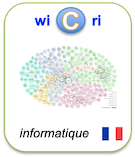Local phylogenetic analysis identifies distinct trends in transmitted HIV drug resistance: implications for public health interventions
Identifieur interne : 000100 ( Pmc/Corpus ); précédent : 000099; suivant : 000101Local phylogenetic analysis identifies distinct trends in transmitted HIV drug resistance: implications for public health interventions
Auteurs : James I. Brooks ; Harrison Niznick ; Marianna Ofner ; Harriet Merks ; Jonathan B. AngelSource :
- BMC Infectious Diseases [ 1471-2334 ] ; 2013.
Abstract
HIV transmitted drug resistance (TDR) surveillance is usually conducted by sampling from a large population. However, overall TDR prevalence results may be inaccurate for many individual clinical setting. We analyzed HIV genotypes at a tertiary care setting in Ottawa, Ontario in order to evaluate local TDR patterns among sub-populations.
Genotyping reports were digitized from ART naïve patients followed at the Immunodeficiency Clinic at the Ottawa Hospital, between 2008 and 2010. Quality controlled, digitized sequence data were assessed for TDR using the Stanford HIV Database. Patient characteristics were analyzed according to TDR patterns. Finally, a phylogenetic tree was constructed to elucidate the observed pattern of HIV TDR.
Among the 155 clinic patients there was no statistically significantly difference in demographics as compared to the Ontario provincial HIV population. The clinic prevalence of TDR was 12.3%; however, in contrast to the data from Ontario, TDR patterns were inverted with a 21% prevalence among MSM and 5.5% among IDU. Furthermore, nearly 80% of the observed TDR was a D67N/K219Q pattern with 87% of these infections arising from a distinct phylogenetic cluster.
Local patterns of TDR were distinct to what had been observed provincially. Phylogenetic analysis uncovered a cluster of related infections among MSM that appeared more likely to be recent infections. Results support a paradigm of routine local TDR surveillance to identify the sub-populations under care. Furthermore, the routine application of phylogenetic analysis in the TDR surveillance context provides insights into how best to target prevention strategies; and how to correctly measure outcomes.
Url:
DOI: 10.1186/1471-2334-13-509
PubMed: 24171696
PubMed Central: 3816547
Links to Exploration step
PMC:3816547***** Acces problem to record *****\Le document en format XML
Pour manipuler ce document sous Unix (Dilib)
EXPLOR_STEP=$WICRI_ROOT/Ticri/CIDE/explor/OcrV1/Data/Pmc/Corpus
HfdSelect -h $EXPLOR_STEP/biblio.hfd -nk 000100 | SxmlIndent | more
Ou
HfdSelect -h $EXPLOR_AREA/Data/Pmc/Corpus/biblio.hfd -nk 000100 | SxmlIndent | more
Pour mettre un lien sur cette page dans le réseau Wicri
{{Explor lien
|wiki= Ticri/CIDE
|area= OcrV1
|flux= Pmc
|étape= Corpus
|type= RBID
|clé= PMC:3816547
|texte= Local phylogenetic analysis identifies distinct trends in transmitted HIV drug resistance: implications for public health interventions
}}
Pour générer des pages wiki
HfdIndexSelect -h $EXPLOR_AREA/Data/Pmc/Corpus/RBID.i -Sk "pubmed:24171696" \
| HfdSelect -Kh $EXPLOR_AREA/Data/Pmc/Corpus/biblio.hfd \
| NlmPubMed2Wicri -a OcrV1
|
| This area was generated with Dilib version V0.6.32. | |


